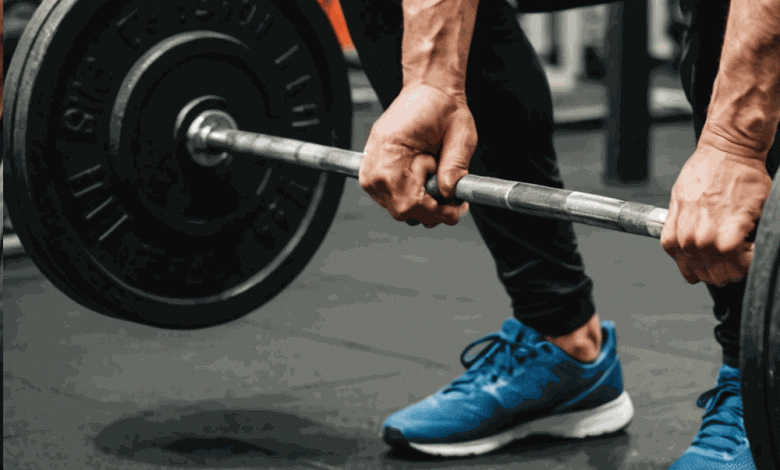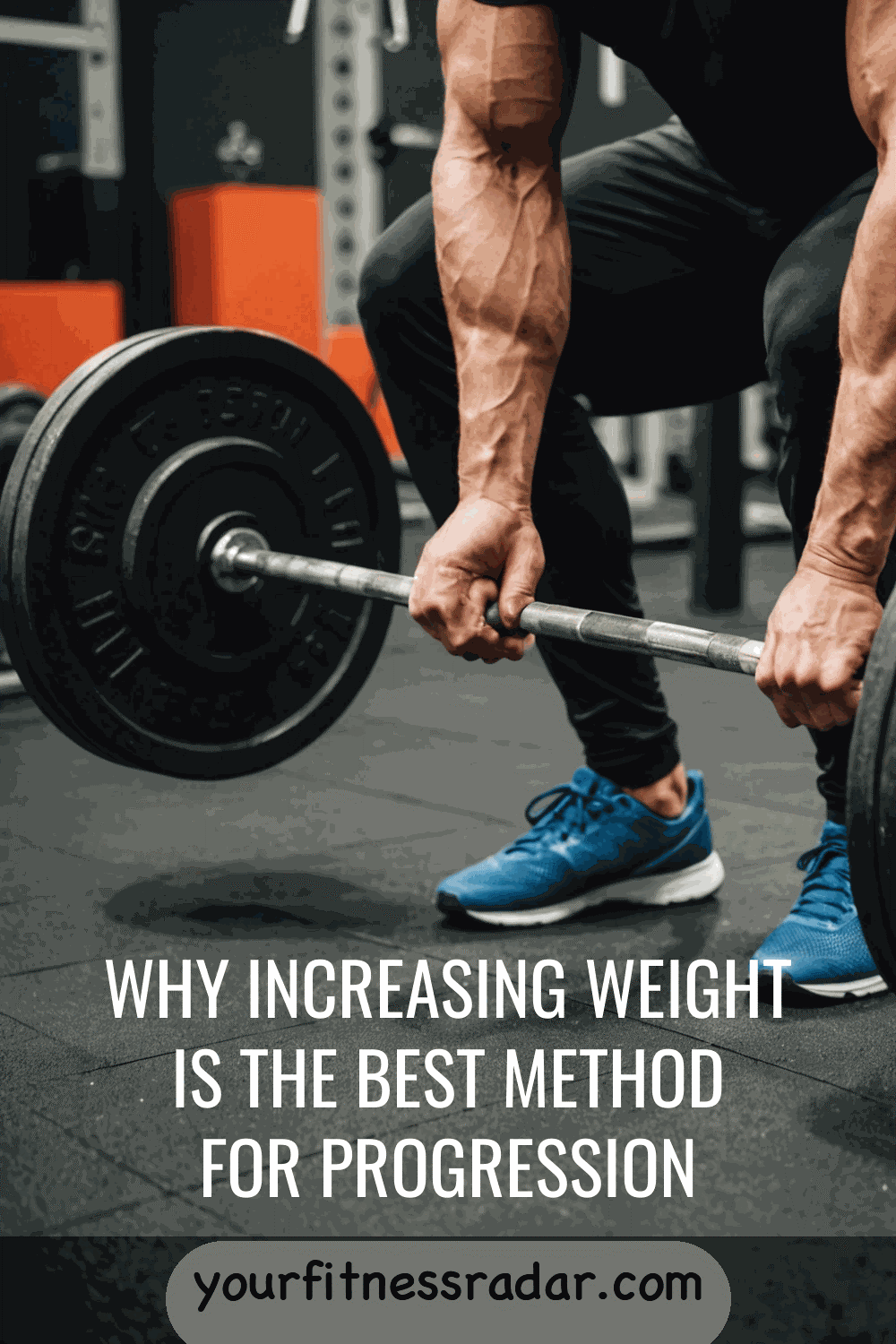Why Increasing Weight is Key to Your Fitness Progression

When it comes to progressing in the gym, what’s your favorite method? Is it increasing weight, increasing reps, increasing sets, reducing the speed of the exercise to make it harder, or reducing the rest period? While all these methods have their place in training, increasing weight is ultimately the best form of progression and the most important one. But let’s face it, it’s not always possible to add more weight to the bar. If it were that easy, we could all just “starting strength” our way to lifting 1,000 lbs for 5 sets of front squats. Unfortunately, it’s not that simple. So, what do we do when we can’t always add more weight? We turn to other methods of progression.
Using the Double Progression Method with Reps
When you can’t add weight every single session, a tried and tested method is called “double progression.” Here’s how it works: you give yourself a rep range for each set. For example, instead of doing sets of 8 reps, you do sets of 8 to 10 reps. This allows you to gradually increase the number of reps you complete before adding more weight. So, you start with sets of 8, then progress to sets of 9, and finally sets of 10. Once you reach the upper limit of the rep range consistently, it’s time to add more weight. By manipulating two different variables – weight and reps – you continue to make progress even without adding more weight every session. This technique is an effective way to keep challenging your muscles and ensuring continuous improvement.
Tackling Reps, Sets, and Weight with Triple Progression
In some cases, you may find yourself needing to progress even further beyond increasing reps. This is where the “triple progression” method comes into play. With triple progression, you have the option to add more sets while still utilizing the double progression method for reps and weight. The number of sets you add can be auto-regulated based on how you’re feeling on a particular day. If you’re feeling good, fresh, well-rested, and stress-free, you might choose to do a little bit more volume. However, keep in mind that adding sets alone doesn’t necessarily signify progressive overload or improved performance. It merely reflects a higher volume of work. So, while triple progression can be useful for varying volume, it’s not the sole indicator of progression or strength gains.
Auto-Regulating Volume for Progression
As you advance and become more experienced, you may notice that your body responds differently to training stimuli. This is where auto-regulation becomes crucial. Auto-regulating volume, or the number of sets and reps, can help you tailor your training based on how you feel on any given day. For example, if you’re feeling fresh and energetic, you may choose to do additional sets or push for higher reps. Conversely, if you’re feeling fatigued or stressed, you can scale back on volume to allow for adequate recovery. By adjusting your training based on how you feel, you can optimize your progress and avoid unnecessary setbacks.
Why Rest Times Should Go by Feel
Rest times are often overlooked but can significantly impact your performance and progress. While exercise science may prescribe specific rest times for experimentation and standardized protocols, adhering strictly to these rigid timings is not always necessary for effective training. In fact, most advanced lifters don’t adhere to strict rest times. Instead, they go by how they feel. Rest times should be dictated by your physiological readiness, rather than a predetermined time on a stopwatch. Your ability to know when you’re ready for the next set is a skill you develop over time. Simply relying on the stopwatch to guide you may not yield the best results. Listen to your body and allow yourself the time you need to recover fully before initiating the next set.
Rest Times Guidelines for Different Exercises
While rest times should be based on how you feel, there are some general guidelines you can follow for different exercises. Keep in mind that these are only broad recommendations and may vary depending on individual factors and training goals. For smaller movements like calf raises or wrist curls, a minute of rest may be sufficient. For compound movements, such as bench press or rows, rest times of two to three minutes are commonly used. When it comes to lower body compound movements like squats or deadlifts, rest times of three to five minutes or more may be necessary, especially when performing high-intensity sets or sets with higher rep ranges. Remember, these rest times are not set in stone and should be adjusted based on your individual needs and performance.
Avoiding the Pitfalls of Adding Sets for Progression
Adding sets can seem tempting, especially when you’re looking to progress and challenge yourself. However, it’s essential to understand that adding sets alone is not a reliable method of progressive overload. While it may make the workout more difficult and increase overall volume, it doesn’t necessarily translate to improved strength or adaptation. It’s crucial to differentiate between hard work and meaningful progress. Merely staying in the gym longer or doing more sets doesn’t guarantee better results. Instead, focus on increasing weight or reps within a given range to ensure progressive overload and consistent progress over time.
The Challenge of Maintaining Technique While Progressing with Weight and Reps
Progressing with weight and reps can present a unique challenge – maintaining proper technique. As you aim to increase the load or push for additional reps, it’s easy to slip into bad habits. The constant battle of wanting to add another rep can lead to rushing through exercises and compromising form. It’s essential to stay mindful of technique and avoid making the exercise easier unintentionally. Deep down, you know that quickening the pace or altering your form undermines your progress. So, how can you circumvent this challenge and maintain proper form?
Allowing Some Technique Variation for Progression as an Advanced Lifter
Maintaining technique while progressing as an advanced lifter can be particularly challenging. When you have years of experience and have hit a plateau, progress becomes harder to measure. You may find it tempting to add a bit of variation to gain a few extra reps. For example, with incline dumbbell curls, you might start leaning forward or rotating your shoulders to involve other muscles and make the movement easier. While this variation can be tempting and allow you to push for more reps, it’s important to remember that it may detract from the target muscle groups. Standardizing your technique is crucial for effectively targeting the desired muscles.
Cleaning Up Technique Over Time
While a little bit of variation can be acceptable, it’s vital to clean up your technique over time. Use advanced techniques sparingly and only when necessary. Once you have reached a new level of performance, focus on refining your technique without sacrificing the progress you have made. After a few months of incorporating additional muscle groups or slight variations, take the time to refine your technique and ensure you’re performing the exercise as intended. Continuously striving for proper form helps you maximize the benefits of each exercise and prevent injury.
Using Advanced Strategies Only When Needed
As an intermediate or advanced lifter, it’s crucial to use advanced strategies only when necessary. Rest-pause, intensity techniques, and other variations are tools designed for specific situations. They should be reserved for plateau-breaking or advanced training phases. Utilizing these strategies too early in your training journey does not make you an advanced lifter. To become an advanced lifter, you must first master the basics and diligently follow proven training principles. These advanced strategies should be viewed as tools in your toolbox, strategically employed to overcome specific challenges or stimulate new adaptations.
The Importance of Following the Basic Path to Becoming an Advanced Lifter
In conclusion, the path to becoming an advanced lifter begins with mastering the basics and following proven training principles. Increasing weight is the most reliable method of progression, ensuring continuous improvement over time. When weight increments aren’t feasible, the double progression method with reps allows you to steadily improve, followed by incorporating extra sets when needed. Auto-regulating volume and rest times based on your body’s cues is essential for optimal progress. As you advance, focus on maintaining proper technique while increasing weight and reps. While there may be room for slight variation, these should be eventually cleaned up to maximize muscle activation. Advanced strategies should be used sparingly and at the appropriate time. By following this basic path and remaining consistent, you’ll be on your way to becoming an advanced lifter in no time.




